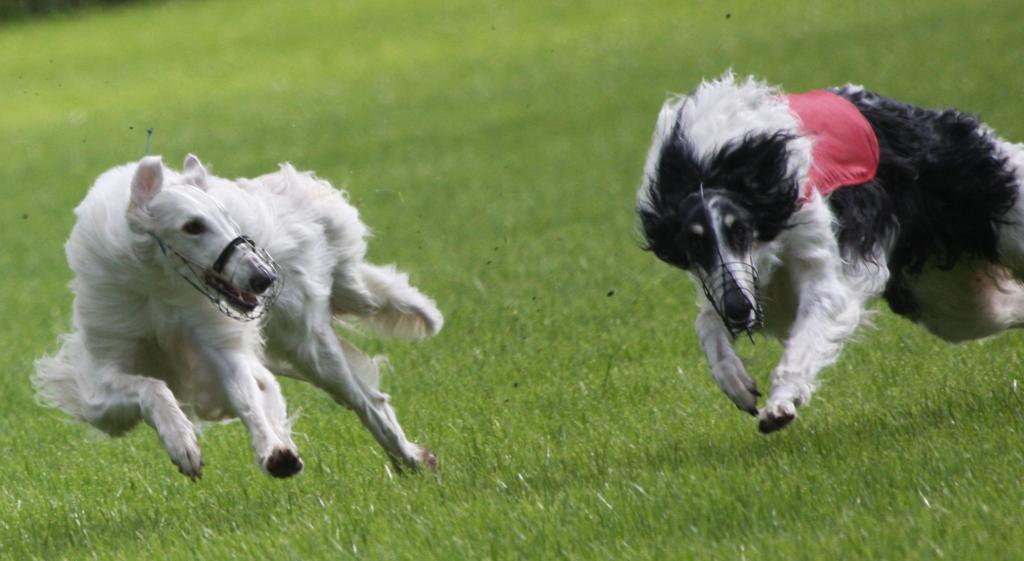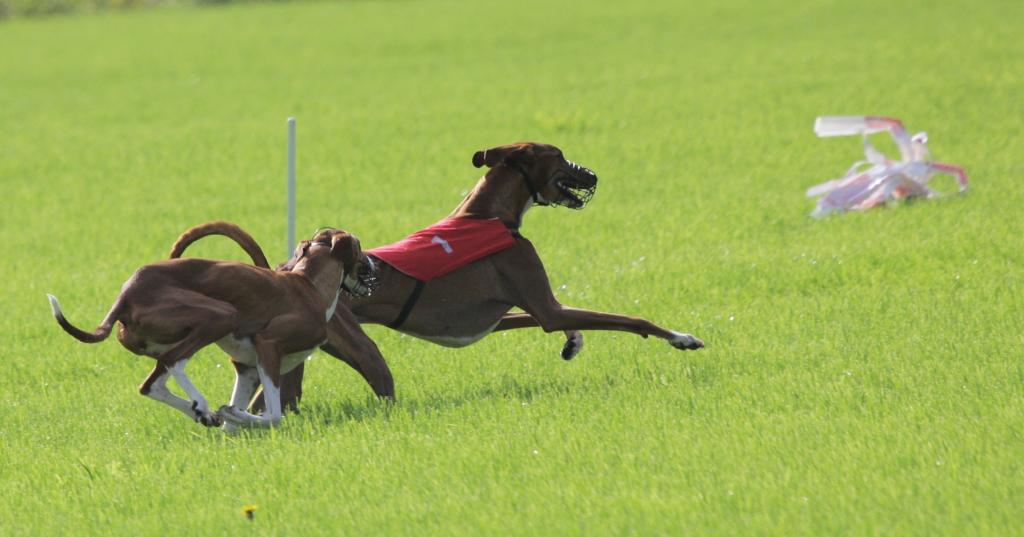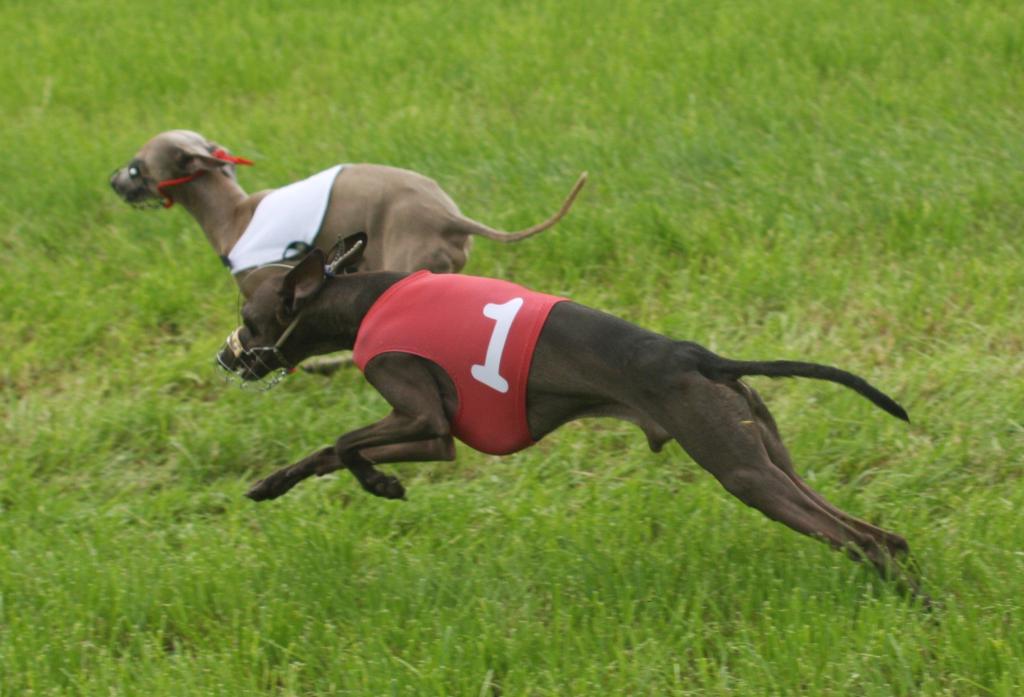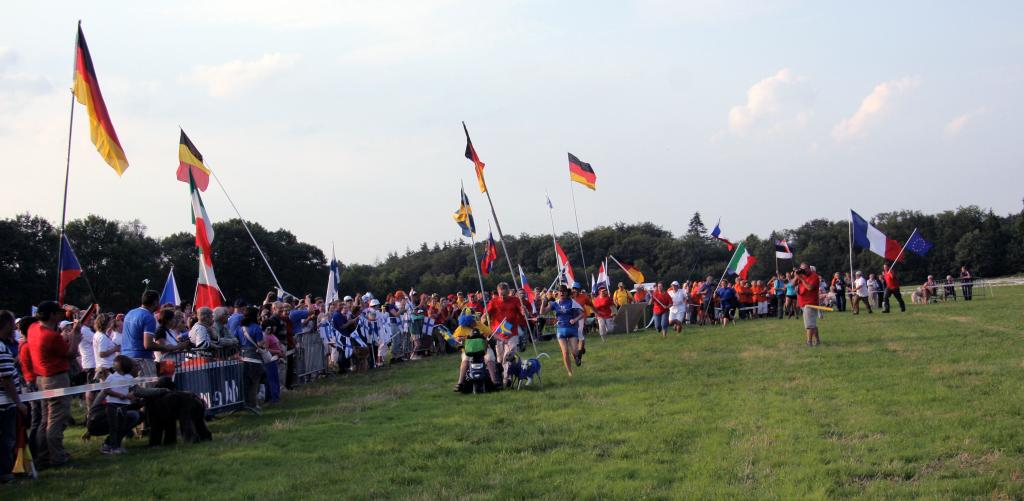2011 European Coursing Championships in Oirschot: a competition with obstacles
New records were set once again at the European Coursing Championships, with a total
of 697 dogs, not including reserve starters, entered for this year’s competition
(per breed) in the Dutch region of Oirschot, a few kilometres to the west of Eindhoven.
So, with a further 140 sighthounds (reserve), the number of entrants was boosted
to far above 800 dogs for the first time, with a total of 17 European countries
taking part. This represented yet another increase of over 10% compared with the
previous year’s event in the French region of Chardonnay. Where will this development
lead? Who can provide sufficient space for all these competitors? And who can guarantee
the smooth and proper running of such mega-events?
© Marina Franz

The Dutch organisers found it, in any case, a bit hard to cope with the situation
when you consider that the award ceremony, which started after 10 p.m. on Saturday,
the first day of the competition, dragged on in the pouring rain until well past
midnight - rather a cheek for all the participants and, of course, all those officials
that couldn’t do anything about this chaos. Especially as there was no lighting
and the scenery was only meagrely illuminated by the headlights of three cars.
However, there were also very positive impressions on the Baest Estate in Oirschot,
where the sighthound competitions were held. Here, on the three courses of over
1 kilometre long each on three flat meadows, there was initially no sign whatsoever
of the organisational chaos mentioned. Everything went like clockwork there: hardly
any broken ropes, rapid displaying of the hare, speedy execution of the runs. It
was enjoyable to be a spectator there, especially as it quickly become clear during
the runs which dog was really putting its heart and soul into the competition. The
generously marked-out areas displayed long straights more than 100 metres long from
the very start, alternating with tight bends, a challenge of the higher category,
which only the very fit dogs could master at the end. This was particularly noticeable
at the end of the second heat, which many dogs that had been placed in the top third
of the field in the morning were only able to complete at a weary trot rather than
with long, powerful leaps. This put competitors in front that could only show off
their physical qualities to full advantage in the second kilometre of the competition.
It was also nice to see a lot of spectators loudly applauding particularly successful
runs by the title contenders.
Unfortunately there was no shelter on the course for the judges and thus no protection
against the heavy rain, which meant that the score sheets were delivered to the
secretariat sopping wet and almost illegible. Things carried on in this way until
the last heats were eventually completed at 9 p.m., thus making an award ceremony
at 10 p.m. absolutely inconceivable.
© Marina Franz

On the second day, the secretariat sat waiting for the entries from the team captains,
who were to provide a precise overview of the dogs ready to start. This made it
possible to complete the starting lists much sooner. The dogs also did an exciting
coursing on that day and the European Championship ended on a positive note.
Anyway the organising associations, Osse Windhonden-Ren-Vereniging ’t Haasje (OWRV),
Windhonden-Vereniging Coursing Nienoord/Leek (WVCNL) and Windhund Rennverein Amsterdam
(WAR) did a very great job.
© Marina Franz

What remains from the European Championships in Oirschot are, therefore, quite contrary
impressions. On the one hand, the very smooth handling of the competition on the
three courses with the dogs scored in an understandable way. On the other hand,
it was depressing to have to put up with a number of bad mistakes on the part of
the organisers. Both the Dutch and all of those wishing to organise such European
Championships in the future must learn from this.
© Marina Franz

Gerhard Franz